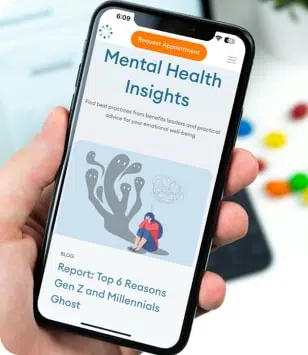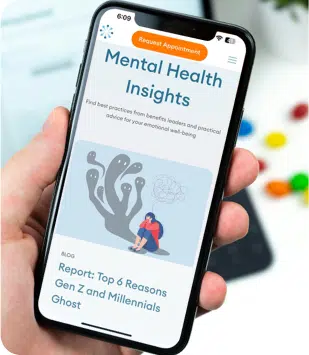7 Conditions that Respond Well to Neurofeedback Therapy

If you take medications for anxiety or depression and they don’t work well for you, it can be frustrating and may even do more harm than good.
At Thriving Center of Psychology, our experienced therapy team offers an alternative to medications: neurofeedback training. This noninvasive treatment can address your symptoms and help you better control the activity in your brain.
How neurofeedback therapy works
Neurofeedback training is a noninvasive procedure that measures your brainwave activity and body temperature. Electrodes that attach to your scalp send brainwave activity information to an electroencephalography (EEG) machine.
Your provider at Thriving Center of Psychology can see your brainwaves on the EEG machine in real-time. This helps them understand how your brain is working to process your thoughts, actions, and emotions, and how they trigger a response in your brain.
The information learned from neurofeedback training can highlight when your brainwaves aren’t working in balance together, which can contribute to or cause a number of conditions. By understanding how your brain is contributing to or causing certain conditions, your therapist can retrain your brain to help you find symptom relief.
Conditions neurofeedback therapy can treat
The team at Thriving center of Psychology can successfully use neurofeedback training to relieve symptoms of various conditions, such as:
- Stress
- Trauma
- Anxiety
- Autism
- Depression
- Substance abuse
- Early-stage Alzheimer’s disease
These conditions can cause your brain to develop new neural connections that lock your brain into certain patterns of thinking or behaviors.
What to expect during neurofeedback therapy
During neurofeedback training, you’ll listen to music or other sounds, view images on a screen, or engage in other simple activities. This engagement can help bring your brainwaves back into harmony and a more balanced state.
Your provider will monitor how your brain responds in real-time to the sounds and images. When your brain is producing positive activity, positive things occur. For example, if you’re watching a video and your brainwaves are positive, special music will play. When, however, your brainwave patterns aren’t as positive, the light in the screen might dim.
This instant feedback will help retrain your brain subconsciously. Over time, this will help you regain control over your thoughts and actions and help your brain activity remain in a better balance, so you’ll be able to get relief from symptoms, such as anxiety and depression.
Neurofeedback therapy can also enhance performance
If you’re looking for an effective way to achieve peak performance in sports or your career, neurofeedback training might help as well.
Our team at Thriving Center of Psychology can use neurofeedback training to maximize your athletic performance, boost your creativity and artistic skills, and increase your mental processing ability.
Before we provide neurofeedback training, we assess your physical health, mental health, and what you hope to accomplish with the therapy in order to determine if it’s right for you. In general, neurofeedback training is a safe and effective treatment that can help you live a happier, more satisfying life without medications.
To learn more about neurofeedback training and to see if it can help you, book an appointment online or over the phone with Thriving Center of Psychology today.

Finding a Bilingual Therapist in New York City
a city where people speak over 200 different languages, finding a bilingual therapist in New York is more than a convenience – it can be a game-changer for mental health

The Link Between Social Media and Depression
In today’s world, scrolling through social media is as routine as brushing our teeth. We open apps out of habit — on the train, in bed, while waiting in line. Platforms like Instagram, TikTok, and Facebook keep us connected, informed, and entertained.

Signs Depression is Taking a Toll on Your Relationship
Depression can impact every part of a person’s life, from their work to their romantic relationships. Dealing with depression can take its toll on both the person with depression and the supporting partner. If you’re worried that depression is affecting your relationship, understanding its impact is an important first step.

Anxiety Attack and Panic Attack Differences
’s easy to mix up anxiety and panic attacks. While anxiety attacks and panic attacks do have overlapping symptoms, they are different. Let’s get into the differences between anxiety and panic attacks so you can be in a better position to get the help you need.




